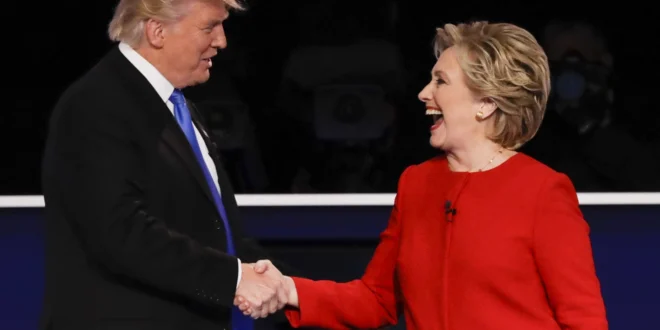Dr. Shehab Al-Makahleh
There’s an old saying: history doesn’t repeat itself, but it often rhymes. As the 2024 presidential election unfolds, the question on many minds is whether this year will echo the surprising outcome of 2016.
In the 2016 race, Hillary Clinton led national polls by 3 to 4 points in late September. Donald Trump, trailing in most of the national media’s coverage, zeroed in on a handful of key states. The pundits didn’t expect him to win those battlegrounds, but he did, securing an Electoral College victory despite losing the popular vote.
Fast forward to 2024. Kamala Harris is leading national polls by about 2 points, according to the RCP average. Yet, in key swing states—the real deciders of the election—Trump is holding his ground. Polls show him with slight leads in Arizona, North Carolina, and Georgia, while he’s running neck and neck with Harris in Pennsylvania, Wisconsin, and Nevada. Only in Michigan does Harris seem to have a notable advantage.
The Middle East Conflict: How It Affects Trump and Harris
However, a recent escalation in the Middle East involving Hezbollah, Hamas, and Israel could have major implications for both candidates. The ongoing conflict is reshaping global attention, and its fallout may influence U.S. voters, particularly those concerned about foreign policy and national security.
Trump, who positioned himself as a staunch ally of Israel during his presidency, may benefit from a deterioration in the conflict. His strong pro-Israel stance could resonate with voters who view him as a more decisive leader in times of international crisis. Trump’s previous moves, such as recognizing Jerusalem as Israel’s capital and brokering the Abraham Accords, have solidified his image as a forceful leader in the Middle East. Any escalation could bolster his support among conservative and pro-Israel voters who believe the Biden-Harris administration’s policies are too weak or ineffective.
Harris, on the other hand, will likely face pressure to balance the U.S.’s historical support for Israel with the increasing calls within her party for a more even-handed approach to the Israeli-Palestinian conflict. A full-blown conflict between Israel and Hezbollah, or between Israel and Hamas, could place her in a difficult position—especially among progressive Democrats who are critical of Israel’s actions. She will need to carefully navigate this issue, emphasizing diplomacy while not alienating the pro-Israel voters.
If the situation worsens and U.S. involvement deepens, Harris could be portrayed as lacking the foreign policy strength necessary to manage such a crisis, potentially playing into Trump’s narrative that the Democrats are weak on national security. At the same time, Harris could appeal to those voters who prefer de-escalation and diplomatic solutions, contrasting herself with Trump’s more hawkish approach.
Does 2024 Echo 2016?
Why is Trump performing better in these critical states than in the national vote? One likely answer: strategic television ads. Trump’s campaign has targeted these seven swing states with ads that are far more disciplined and effective than his often erratic public remarks. While his speeches, interviews, and social media posts grab headlines, his campaign is crafting a clearer message to voters in these battlegrounds, outpacing Harris in framing the stakes of this election.
Harris is also running ads in swing states, but her messaging, both nationally and locally, seems to lack the same sharp focus. This raises a critical question: are we heading toward a 2024 version of 2016, where a Democratic candidate wins the popular vote but loses the Electoral College to Trump?
The United States has a dual-track presidential election: one to win the popular vote, and another to secure an electoral majority by winning key swing states. The latter decides who takes the White House. Democrats have won the popular vote in five of the last six elections, yet Republicans have claimed the presidency in three of those contests by winning the Electoral College.
In 2016, a quarter of voters disliked both Trump and Clinton. Yet, when forced to choose, they broke for Trump by 11 points, viewing him as the “change candidate.” Trump likely benefited from a “hidden” vote that the polls couldn’t fully capture. Will the same dynamic play out this time?
In 2016, Clinton’s campaign banked on winning the “blue wall” states—Wisconsin, Michigan, and Pennsylvania—without conducting sufficient polling to ensure those states were still in her corner. The result? A last-minute surge for Trump that most experts failed to predict. Harris is unlikely to make the same mistake, but the margins in these states remain razor-thin.
Despite Trump’s unpopularity in 2016—64% of voters believed he wasn’t honest, 63% doubted his temperament, and 70% were troubled by his treatment of women—he won because 69% of voters were angry or dissatisfied with the federal government, and 82% of voters who prioritized “bringing change” supported him. A majority (62%) also believed the economy was faltering under Democratic leadership.
Could those same currents be stirring in 2024? It’s possible, but this time, the circumstances are different. Trump now has a record: he’s a former president, not the political outsider he was in 2016. He’s been impeached, indicted, and convicted in various cases, and his opponent is less polarizing than Clinton. Additionally, Jan. 6, 2021, has now become one of the most infamous dates in American history.
Yet Trump has new ammunition in 2024—issues like inflation, the Afghanistan withdrawal, and Biden’s immigration policies—that weren’t on the table eight years ago. These problems could reignite the dissatisfaction that propelled him to victory last time.
So, will 2024 be a replay of 2016? That depends on how Trump and Harris play their cards in the weeks ahead. The stakes couldn’t be higher. The country waits to see whether history will rhyme once again.
 Geostrategic Media Political Commentary, Analysis, Security, Defense
Geostrategic Media Political Commentary, Analysis, Security, Defense





